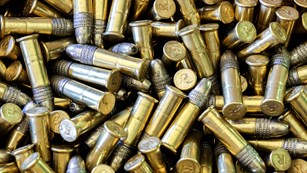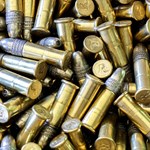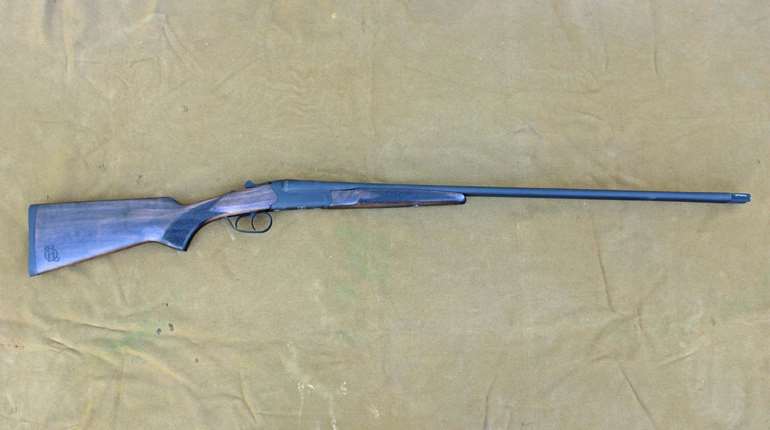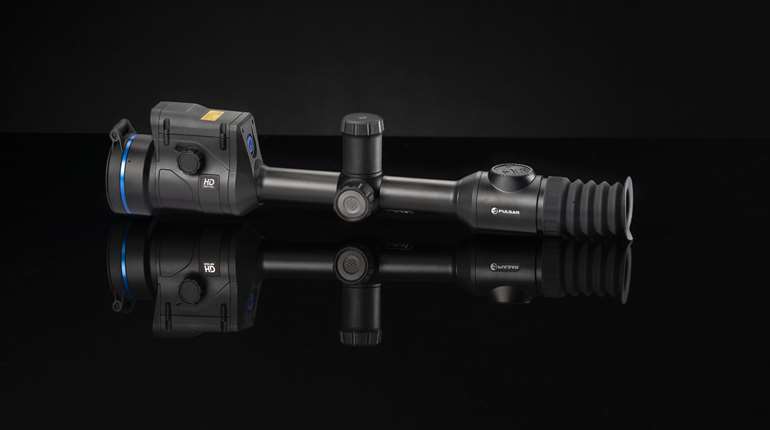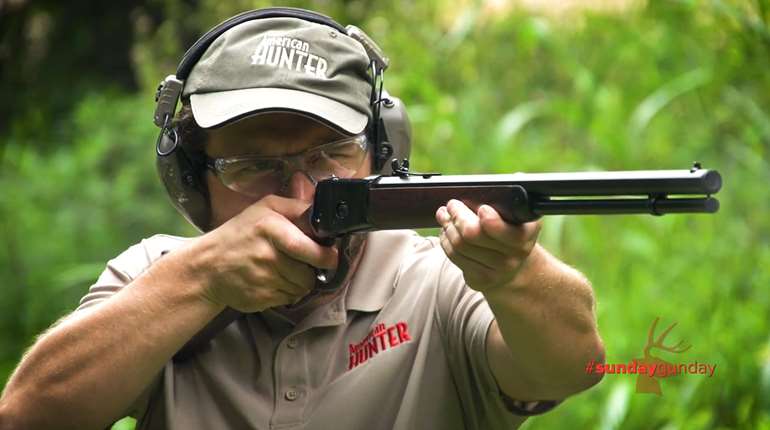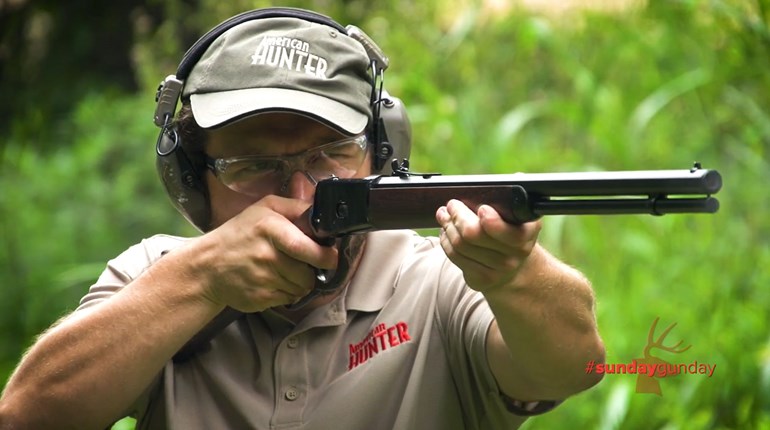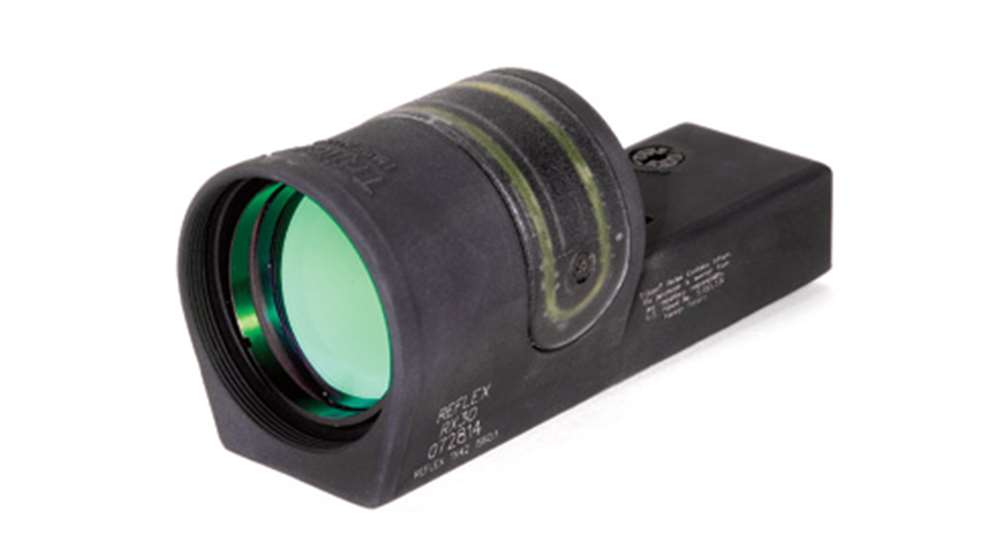
Ask a few servicemen about their standard issue gear and you may hear a few gripes, but I’ve yet to find a soldier who doesn’t love his Trijicon. Makers of the famous ACOG and other optics built for the Army and Marines, Trijicon has been a key supplier of our military and law enforcement, but until recently had not delved much into the hunting market. That changed about a decade ago when the company began to gain a foothold among sportsmen. Some Trijicon products, such as the AccuPoint riflescope with its tritium crosshair, are tailored specifically to hunters. Others, like the Reflex dot-style sight, have crossover potential from military to hunting applications. The Reflex is not only capable of being mounted atop M4 carbines, but last spring I found the new RX30 version very suitable for turkey hunting atop my shotgun.
When the sun is sufficiently bright, the RX30’s fiber-optics collect light and project a 6.5 MOA amber dot reticle onto the lens. The curvature of the lens and a special blue-tint coating cause the dot image to be reflected back to the shooter’s eye. Brightness of the dot is consistent regardless of the sun’s intensity.
As the sun fades, the optic’s light source becomes a tritium lamp. Tritium is a hydrogen isotope that emits light because it is radioactive (you are in no danger of absorbing radiation from the Reflex). It is used in Trijicon optics as well as many handgun night sights and even some wristwatches. The half-life of tritium is such that Trijicon guarantees illumination for 15 years—you can probably expect it to last well over two decades. I experimented with the Reflex in the middle of the day and at night, and the reticle was illuminated perfectly at both extremes.
Notice I didn’t mention batteries, because the RX30 doesn’t use them. That’s perhaps the biggest reason why I think this is one of the best dot-style sights on the market. It requires no external power source. It’s just always on. In fact, there’s not even an on/off switch, nothing for even the most bumbling of doofuses to forgot to do just as a turkey is strutting on in. I have enough trouble remembering a face mask, so the last thing I want is one more thing to remember.
The reticle adjusts for windage and elevation. Unfortunately this requires a flathead screwdriver instead of just your fingertips, but the knobs are precise, 1 MOA click-adjustable and consistent.
The entire unit is contained within an aluminum-alloy housing, a tough material that, in theory, should hold up to repeated thumping by magnum turkey loads. To test this, I ran about three dozen 3-inch, 1 3/4-ounce loads through my Reflex-equipped 12-gauge. I’m confident that’s enough abuse to throw a weak optic out of whack. Think about it: A 3-inch, 1 3/4-ounce, 1245 fps shotshell produces roughly twice the recoil of a 180-grain, .300 Win. Mag. bullet at 2960 fps when fired from guns of the same weight. After my test, my shoulder appeared to have lost its zero, but the reticle hadn’t moved. My test of the Reflex is further bolstered by the trust invested in it by several major law enforcement agencies.
A gripe I have regarding the RX30 is the height at which it rests above the barrel when properly installed on my shotgun’s receiver. It prevents me from mounting the stock as firmly to my cheek as I like or else I’d be looking at the optic’s housing rather than the reticle. It’s similar to mounting a Browning A-5; you have to do so gently in order to see over the hump. This can be corrected, however, by increasing your shotgun’s comb height with a pad or Monte-Carlo-style stock.
The Reflex’s combat roots are reflected in its speed of target acquisition. It’s designed to be shot with both eyes open; the RX30’s 42mm objective and zero magnification provides a wide field of view, so you can acquire the turkey’s beak almost as fast as with a mere bead. So, with no extra time required for target acquisition and far more precise aiming, the Reflex gives its operator an advantage over a bead-sight hunter.
I came to appreciate that fact while hunting turkeys in Michigan just north of Grand Rapids. We hadn’t heard any gobbles all morning, so I got out my camera for a while. I was completely twisted to my right while putting my camera away when I heard my companion say, “Don’t move.” Five gobblers silently ran in from the left to investigate our decoy setup. With the gun in my lap, my torso twisted away from the birds and my hands in my camera bag, I couldn’t have been in worse position. I moved as slowly as possible, but the gobblers were already chirping putts of distress by the time I shouldered the gun. The birds knew something was awry, but before they could determine its source I put the Reflex reticle on a neck and pulled the trigger.
Would this shot have been possible without the precision of the Reflex’s reticle or its rate of target acquisition? Maybe, but it certainly didn’t hurt.
Specs:
800-338-0563, www.trijicon.com
Type: 6.5 MOA dot shotgun scope
Magnification: 1X
Objective Lens: 42mm
Coatings: multi-coated
Dimensions: length, 4.9"; width, 2.1"; height, 2.2"; weight (without mount) 7.6 ozs.
Construction: aluminum-alloy housing
MSRP: $485






